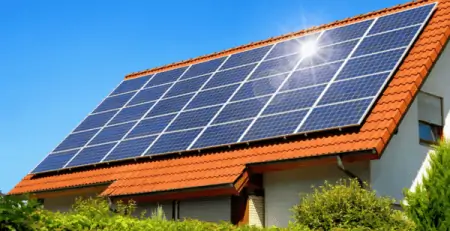Larger Photovoltaic Solar Panels
It is quite obvious the dramatic growth rates in the adoption of solar energy in recent decades have led the world to look for innovative changes. There are so many efforts being undertaken to pull more power in a single panel. Of course, the rated power from photovoltaic solar panels has increased gradually over time. Since 2010, solar panel installers expect to invest in higher module powers.
However, the question is whether bigger modules are better. What makes the world dependent on larger solar panels? Let us make you clear on these points, here.
Solar Photovoltaic Market Trends in the UAE
It is expected to record a CAGR of over 12% in the UAE (PV) market in the forecast period. Some of the key influencers such as government policies have encouraged people to embrace installing solar power and create notable contributions to the growing solar market.
The UAE is about to increase its clean energy share to 44% by 2050, in regard to the adoption of clean energy. The Solar Park is the world’s largest single-site solar park that has been planned to have a capacity of 5,000 MW by 2030. The power plant is in Seih Al Dahal, Dubai, and is capable of reducing more than 6.5 million tons of carbon dioxide emissions in a year, anticipated to commence in 2030.
The Size Of Solar Panels – Do Larger Photovoltaic Solar Panels Really Matter?
To make a relevant answer to this query, it would be ‘size matter’. However, the real potential lies in the way that it measures the size of solar panels. Although, typically, the size of solar modules is measured physically, it is also important to focus on power rating. Looking at the thumb rule, the more cells a photovoltaic panel has, the bigger its size will be.
Let us see the relationship between the size of solar panels and the production of electricity:
Different amounts of energy can be reaped from different sizes of solar panels. Yet, the capacity always doesn’t rely on the size of solar panels. It’s true that larger solar panels can generate more power compared with smaller panels of the same efficiency. Still smaller and highly efficient solar panels are capable of producing a high-power wattage.
The dimension of a solar panel is largely determined by:
- The number of solar cells that the panel contains
- The size of silicon wafers enclosed in such solar cells.
Although you can’t see any formal definitions that make a photovoltaic solar panel ‘Large’, yet, 60- and 72-cell modules are referred to as “medium” and “large”, while modules with over 72 cells are called “extra large”.
Bigger Photovoltaic Solar Panels – How Are They Better?
The recent year is the era of the trend where some of the biggest PV manufacturers have introduced new solar panels as big as the 2-meter mark. Such panels are found to have excess power ratings of 500 W, even high as 800 W, in some cases.
Manufacturers across the world are looking to squeeze more power from the panels. They have found an innovative approach to come up with powerful modules at lower cost – to make the cells of panels and panels larger.
If we look at the data obtained in the period between 2009-2018, there was a significant increase in power from 230 Wp to 315 Wp. However, the noticeable aspect here is there are no changes in the size of the panels.
A new report that has been sourced from the Taiwanese market research company implies the growth of 600 W and more in format size module production. Moreover, TrendForce for Q2 2022 indicates the best opportunities in the continuous manufacturing of photovoltaic solar panels with larger formats and high production capabilities.
Recently Trina Solar announced that it is developing a 210 mm N-type module. This is forecasted to possess a capacity of more than 700 W. From the report, we come to know that 210 mm and N-type keep on optimizing levelized cost of electricity.
With impressive actions taken towards improving power ratings, the innovations end up at – increasing the size of panels. As challenges are being encountered to increase the efficiency of panels, the approach nearer to PERC aims to reduce the cost.
It is very clear that the efforts in manufacturing larger photovoltaic solar panels can assure improved energy yield and lower LCOE at the project level. This makes the entire world a greater dependency on larger solar panels and value bigger panels as an indispensable innovation in the solar industry.
Solar PV economics have changed a lot. This pushes module manufacturers to jump into the race of scaling up the size of panels and thus increasing the power of panels.
Will this trend continue to rise? No perfect answer to this! Questions are going on how customers can handle larger modules and the probable answer is that it depends on the installation area.





